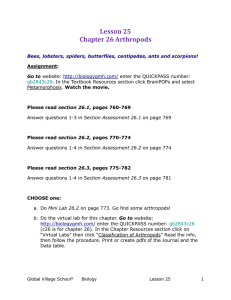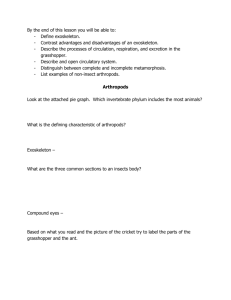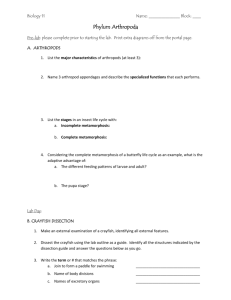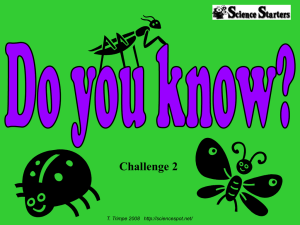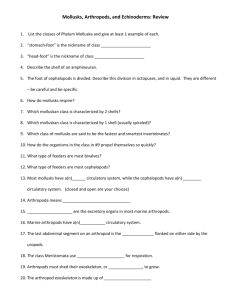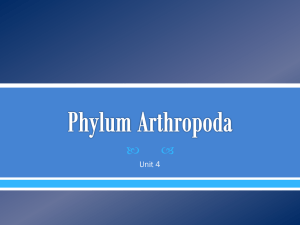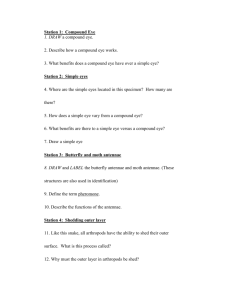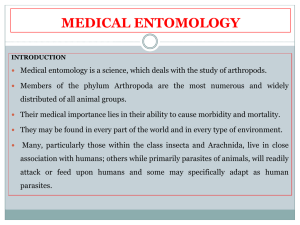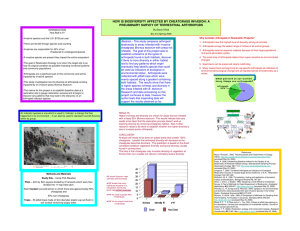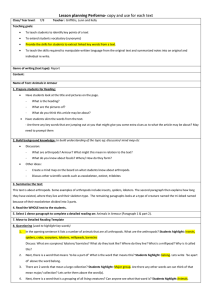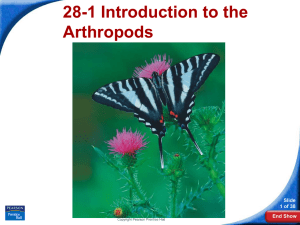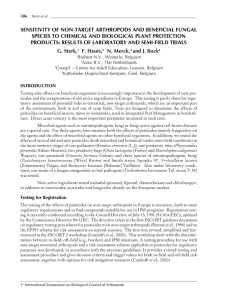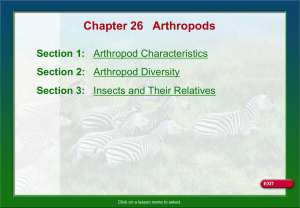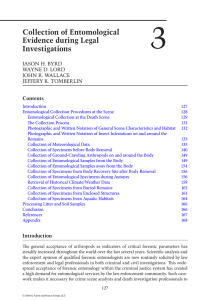Arthropods
advertisement
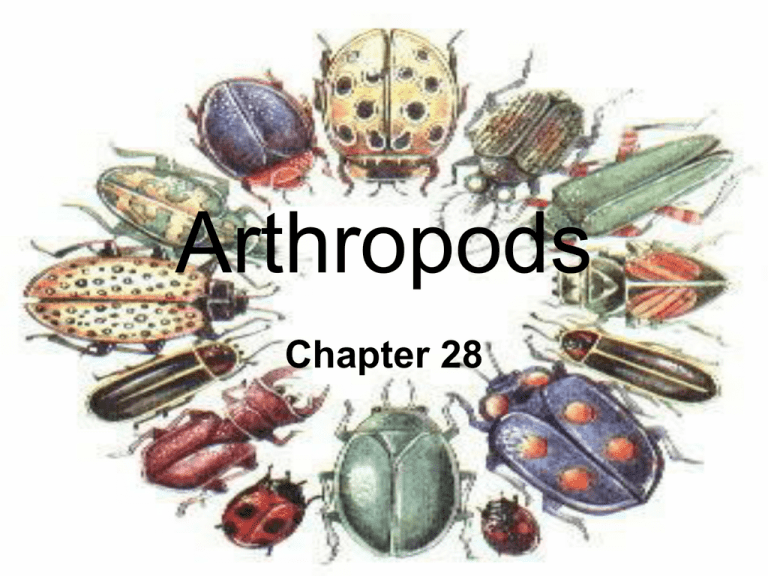
Arthropods Chapter 28 Arthropods include: • Insects, Arachnids, Crustaceans, Centipedes Common characteristics of all arthropods: 1. Invertebrates-no backbone 2. Bilateral symmetry- divide into 2 equal sides at one point 3. Coelom- cavity around internal organs 4. Exoskeleton-outside body skeleton 5. Jointed appendagesstructures growing out of body have joints 6. Open circulatory system – blood pools in spaces (not vessels) Common characteristics cont… 7. Complete digestive system -mouth, intestines, stomach, anus 8. Mandibles-a variety of jaws/ Functions: hold, chew, suck, and bite Appendages • Used for 1. locomotion, 2. sensing, 3. feeding, 4. mating Exoskeleton • Hard thick covering made of protein & chitin • May be solid all over body or may be in segments Functions 1. Protect 2. Support internal tissues 3. A place of attachment for muscles, prevents 4. Water loss Exoskeleton growth • Can’t grow as the body grows • They must shed the old skeleton & grow a new one/process called molting • The new skeleton will grow underneath & eventually pop off the old one • Most arthropods molt 4-7 times in life Most arthropods have 3 segments to their body These include: -The head -The thorax (chest area) -The abdomen How do arthropods breathe (respire)? 1. Aquatic arthropods-use gills ex. Crayfish Breathing cont… 2. Most insects use tracheal tubes -branching networks of hollow air passages that carry air through body. -Muscles pump air through the tubes to openings called spiracles. Ex. grasshopper Breathing cont… 3. Arachnids use book lungs -these air chambers are stacked like books Ex. Spider Arthropods have acute (very good) senses 1. Quick movement Ex. Fly 2. Antennae-use to detect and communicate 3. Pheromones-chemicals used to signal Ex. Ants 4. Acute vision (simple and compound eyes) -detect motion very well -can see in almost all directions except directly behind. Ex. This is why it is hard to hit a fly! Reproduction in Arthropods • Most have 1 type of sex organ on each (male or female) • A few are hermaphrodites (male & female organs) Types of fertilization -If it lives on land-fertilization is internal -If it lives in water-fertilization is external in water Arthropod classification: • Kingdom: Animalia • Phylum: Arthropoda • Classes: 4 classes 4 classes of arthropods 1. Arachnids-spiders, scorpions, mites, ticks 2. Crustaceans-all are aquatic-lobster, shrimp, crayfish 3. Centipedes & millipedes- they differ on the number of legs on each section & the type of food they eat • Includes millions of species (largest group) • Mate only around 1 time in lifetime • Eggs are fertilized internally and shells form around the eggs • Female lays the eggs after they are fertilized • The # of eggs laid is enormous – Purpose: to increase chance of survival Class Insecta: Insect cartoon Changes insects undergo after hatching: Metamorphosis-series of changes controlled by chemical substances 2 Types of Metamorphosis: 1. Complete metamorphosishas 4 stages (ex. Butterfly) 4 stages: a. Egg b. larva-free living worm-like stage (caterpillar) c. pupa-larva tissue broken down and replaced in a case-cocoon d. adult Complete metamorphosis: 2. Incomplete metamorphosis has 3 stages (Ex. Grasshopper) 3 stages: a. egg b. nymph-smaller version of adult (looks like adult but lacks appendages like wings and cannot reproduce c. adult Know Insect Structures! • P. 752 Draw and label the grasshopper • Write the functions under each labeled part • Leave in notebook to study for test • Study drawing, functions and notes for test
